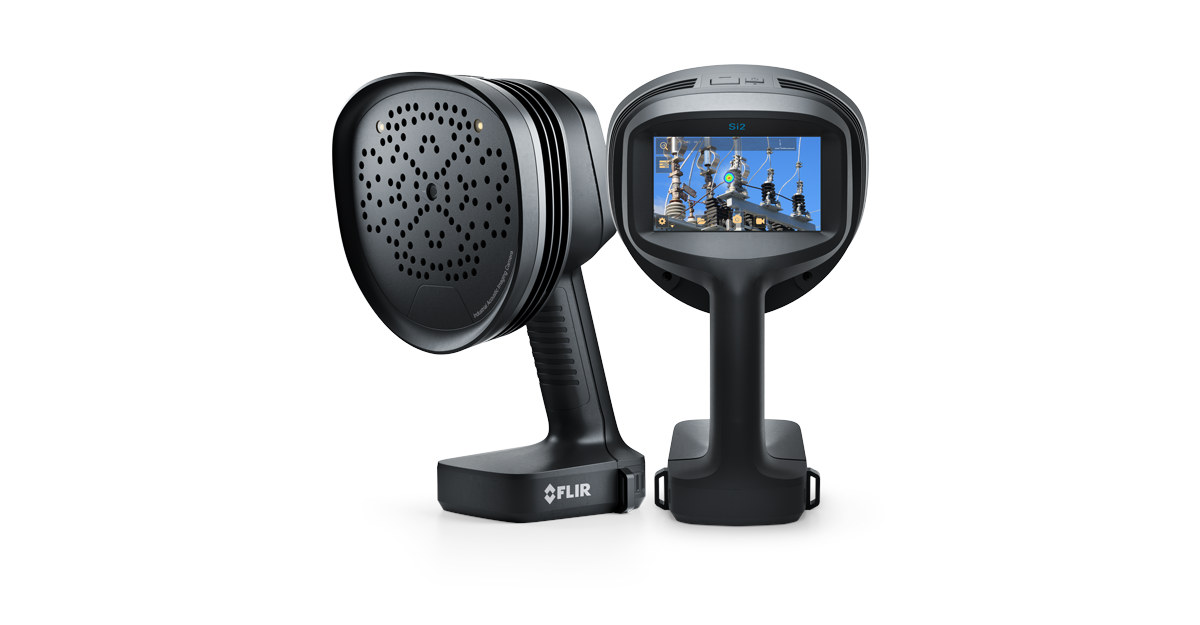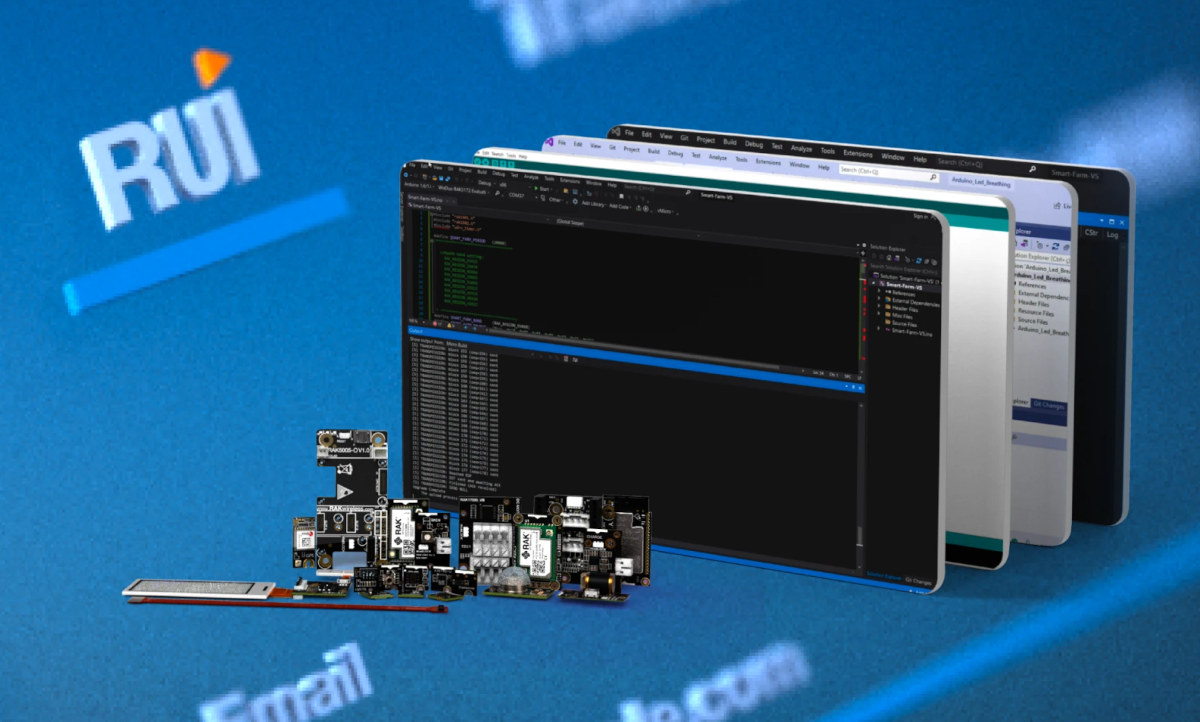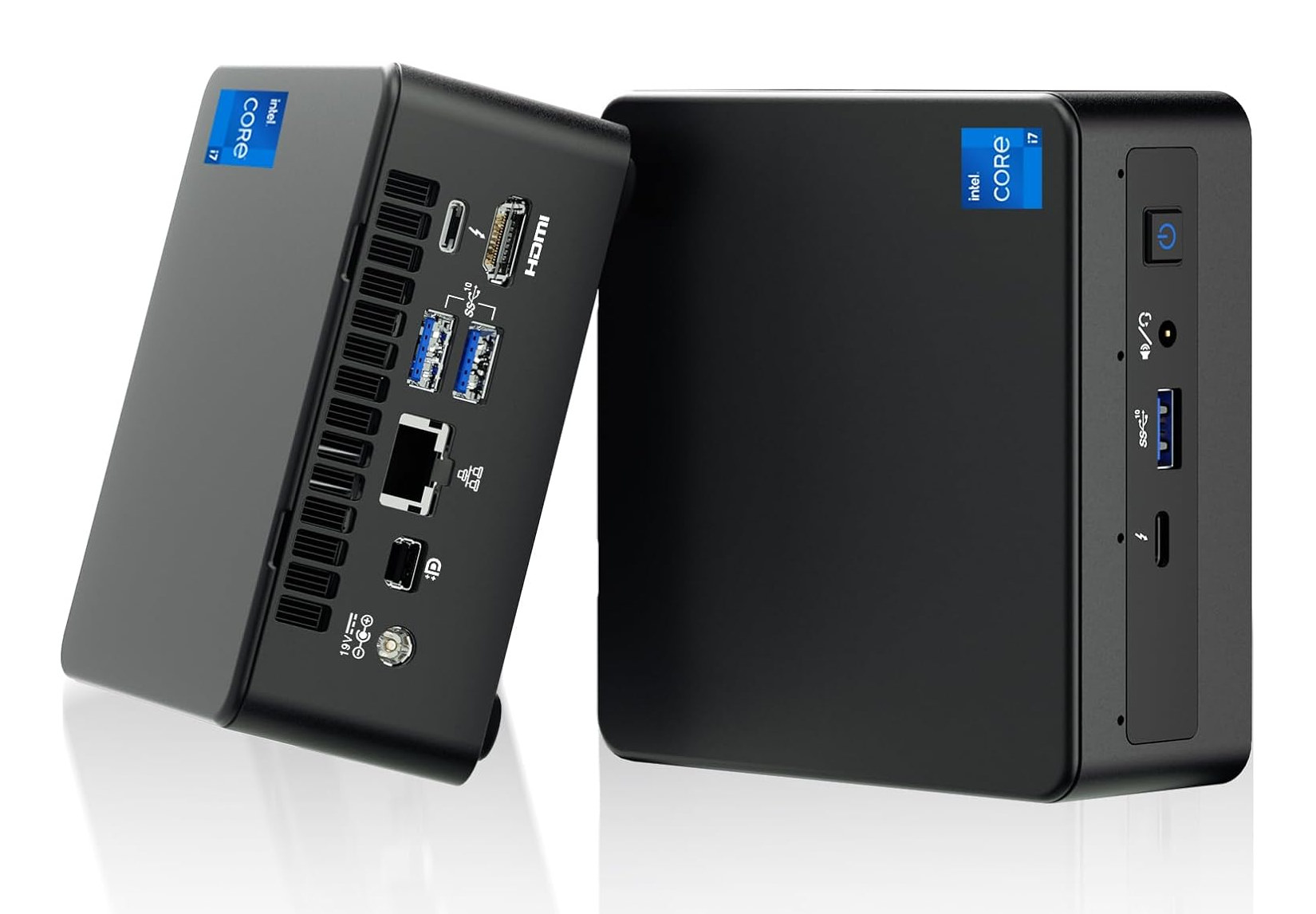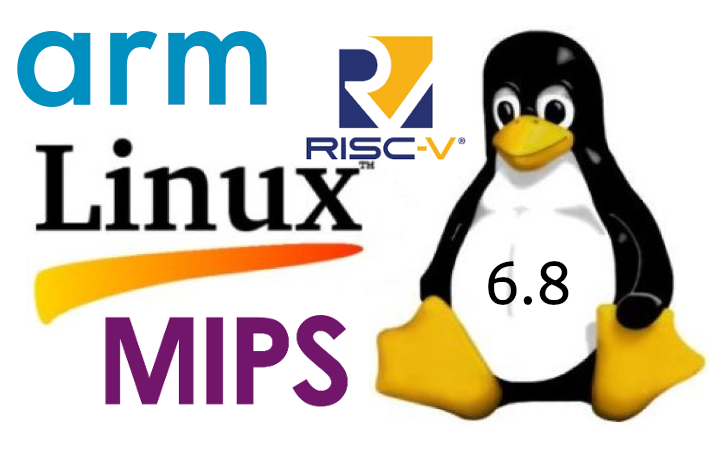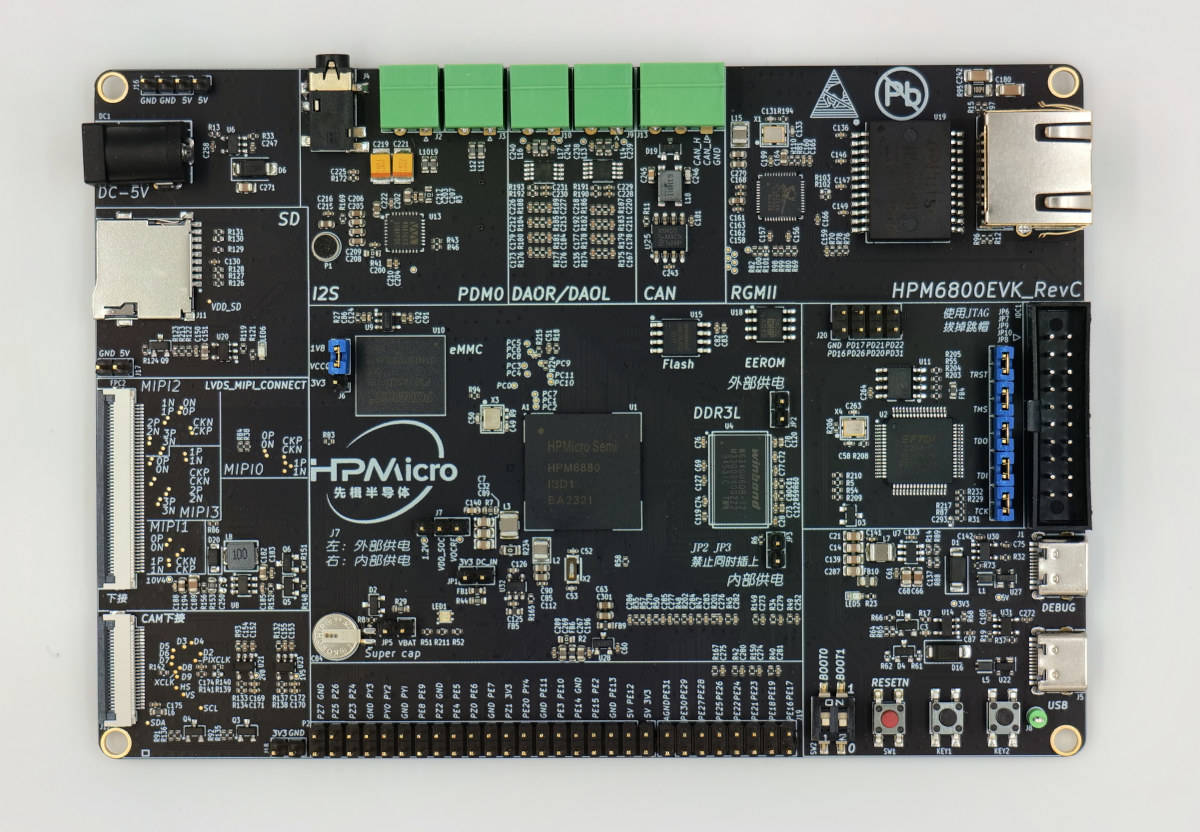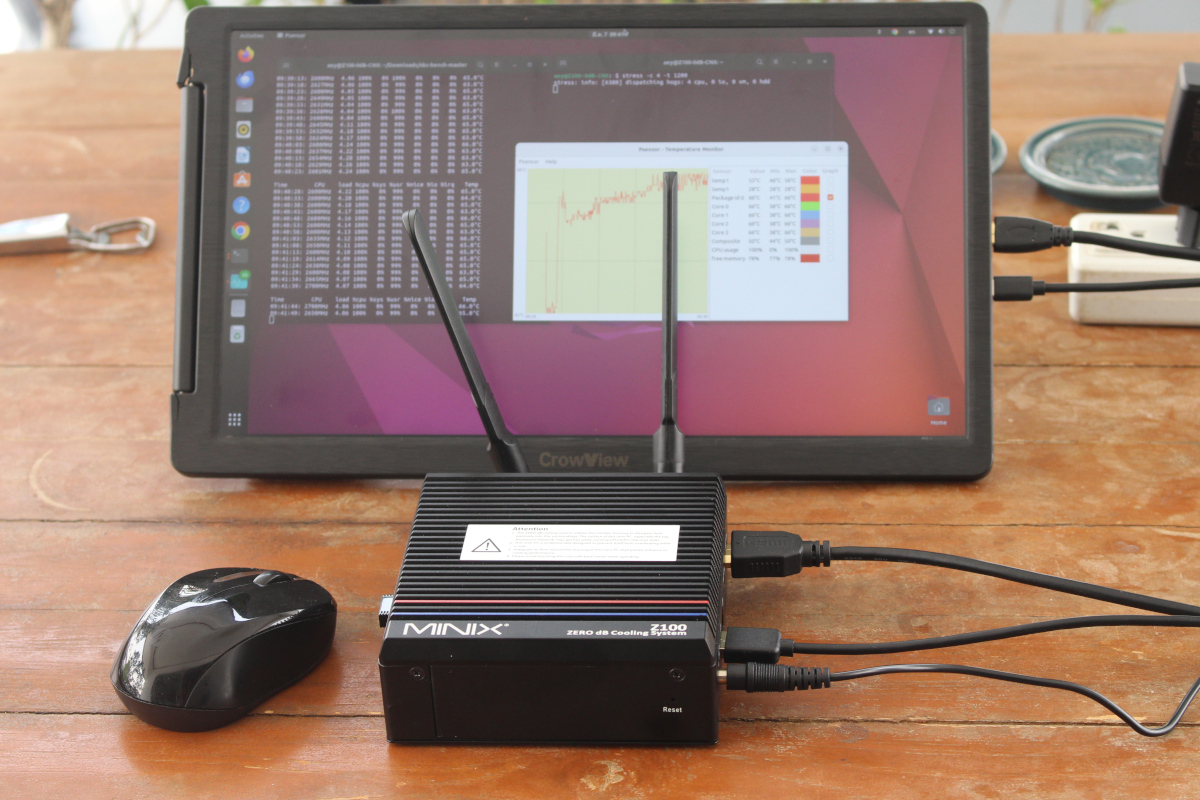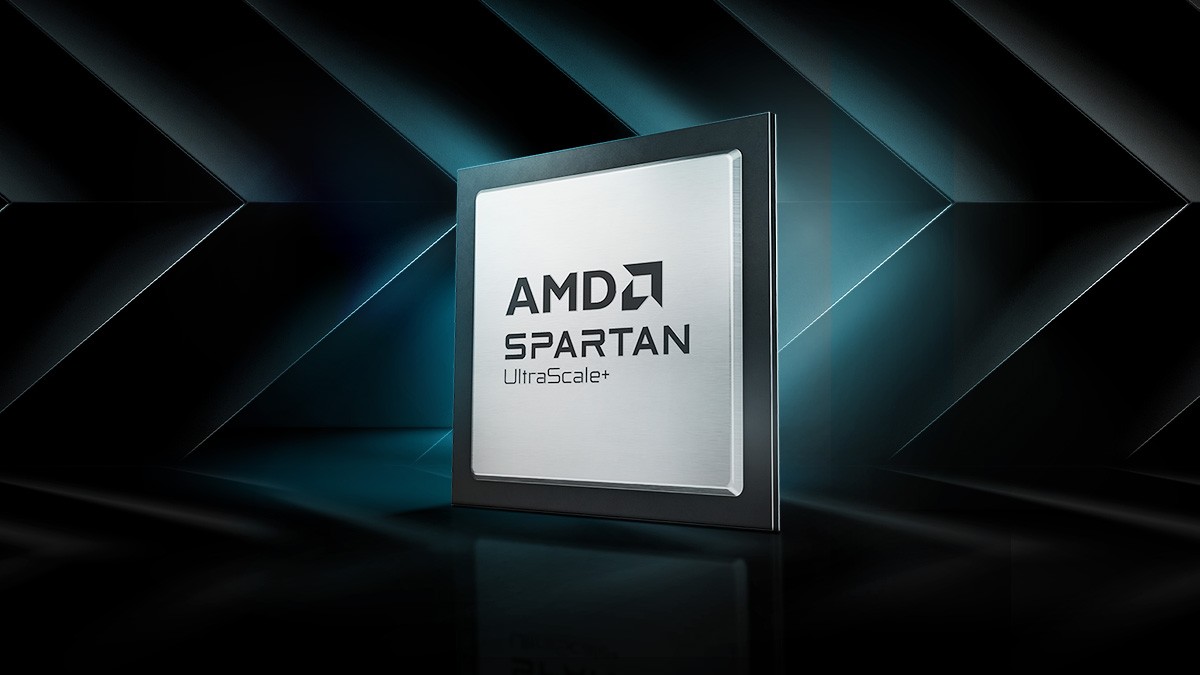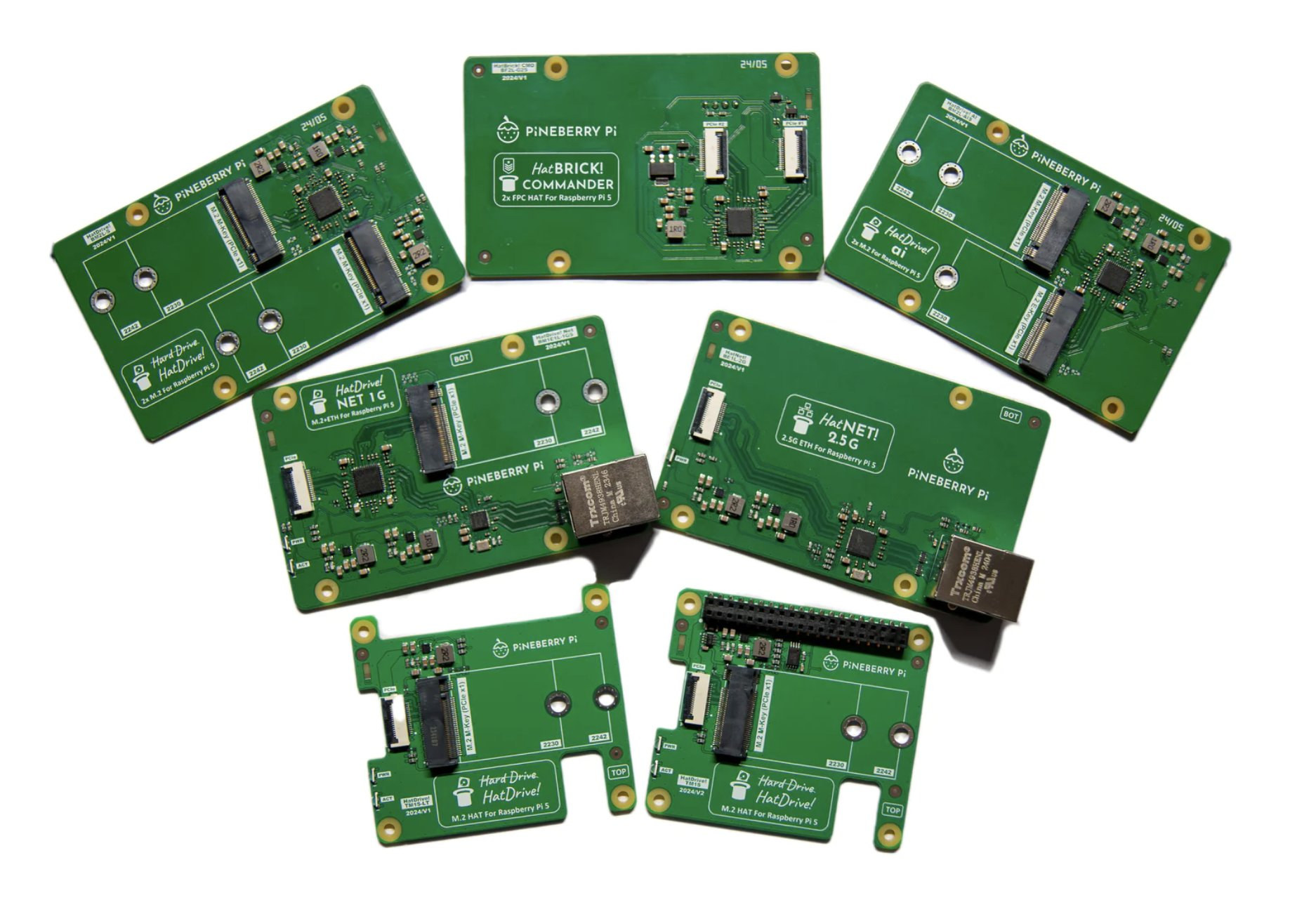Teledyne FLIR is well known for its thermal imaging infrared cameras, but the FLIR Si2 is different as instead of measuring temperature, the acoustic imaging camera is equipped with 124 sensitive microphones to detect leaks, electrical discharge, and mechanical faults up to 200 meters away. The acoustic imaging camera also comes with a 5-inch display and a 12MP RGB camera. It is available in three variants: the FLIR Si2-PD for partial discharge detection, the Si2-LD for air leak and mechanical fault detection, and the Si2 Pro capable of handling both. FLIR Si2 specifications: Display – 5-inch resistive touchscreen TFT PCB with 1280 × 720 resolution Measurement and analysis FLIR Si2-LD Detection threshold 20 kHz: -7 dB SPL 35 kHz: 4 dB SPL 50 kHz: 10 dB SPL 80 kHz: 36 dB SPL 100 kHz: 51 dB SPL Supported gases: Compressed air, hydrogen, CO2, methane, natural gas, helium, argon, ammonia Other […]
RAKwireless open sources RUI3 multi-target IoT development platform
RAKwireless has made its RUI3 IoT software development platform open-source so that customers or users can implement “nice-to-have” features on top of the features already implemented by the company which could make it even more versatile in a wider range of IoT scenarios. Introduced in 2022, the RAK Unified Interface v3, or RUI3 for shorts, is a modular IoT platform based on the Arduino SDK with additional functions for IoT connectivity and low power that supports a variety of devices and applications. So developers can learn the language, code once, and use the same software on multiple WisBlock core platforms including Nordic Semi nRF52, STM32, ESP32, and Raspberry Pi RP2040 instead of having to juggle between different the Arduino BSP, the ESP-IDF framework, Nordic nRF Connect SDK, or Raspberry Pi C SDK. Users could already use the RUI3 firmware with the RAK3172 (STM32), RAK4630/RAK4631 (nRF52), or RAK11720 (Apollo3) WisBlock Core […]
Intel NUC11PAHi7 with Core i7-1165G7 CPU, 16GB RAM, 512GB SSD is now available for $445.50 (Sponsored)
The Intel NUC 11 was offered with a 5% discount last month, but the company has now further dropped the price to $445.50 on Amazon with a 10% coupon code (D33TQNF4) for the NUC11PAHi7 model with an Intel Core i7-1165G7 CPU, 16GB of RAM and a 512GB NVMe SSD. First launched in 2021, the Intel NUC11PAHi7 supports up to four 4K displays through HDMI, Mini DP, and Thunderbolt interfaces, offers 2.5GbE and WiFi 6 connectivity, three USB 3.2 Gen 2 ports, and even a CIR (Consumer InfraRed) port. Here’s a reminder of the Intel NUC11PAHi7 specifications: SoC – Intel Core i7-1165G7 quad-core/octa-thread Tiger Lake UP3 processor @ up to 2.8 GHz / 4.7 GHz (Turbo) with 96EU Iris Xe Graphics; 15W TDP (configurable between 12 and 28W) System Memory – 16GB DDR4-2666 via SO-DIMM sockets expandable up to 64GB RAM Storage 512GB M.2 NVMe (PCIe Gen4) SSD SD card slot […]
Linux 6.8 release – Notable changes, Arm, RISC-V, and MIPS architectures
Linus Torvalds has just announced the release of Linux 6.8 on the Linux kernel mailing list: So it took a bit longer for the commit counts to come down this release than I tend to prefer, but a lot of that seemed to be about various selftest updates (networking in particular) rather than any actual real sign of problems. And the last two weeks have been pretty quiet, so I feel there’s no real reason to delay 6.8. We always have some straggling work, and we’ll end up having some of it pushed to stable rather than hold up the new code. Nothing worrisome enough to keep the regular release schedule from happening. As usual, the shortlog below is just for the last week since rc7, the overall changes in 6.8 are obviously much much bigger. This is not the historically big release that 6.7 was – we seem to […]
HPMicro HPM6800 600 MHz RISC-V MCU comes with a Vivante 2.5D GPU with OpenVG support
HPMicro HPM6800 is a family of high-end RISC-V microcontrollers clocked up to 600 MHz integrating a VeriSilicon Vivante 2.5D GPU with support for the OpenVG 1.1 vector graphics API, and peripherals making it suitable for digital dashboard displays and human-machine interfaces (HMI). The family is comprised of three parts: the HPM6830 without video support, the HPM6850 with 2D graphics and video input/outputs, and the HPM6880 adding support for the 2.5D OpenVG GPU from VeriSilicon. All variants come with 1064KB SRAM, support for external DDR2/DDR3/DDR3 memory, NOR, PSRAM and eMMC flash, audio interfaces, and a range of peripherals with eight CAN FD interfaces, gigabit Ethernet, USB high-speed, and many more. HPMicro HPM6800 specifications: CPU – Single core 32-bit RISC-V (RV32-IMAFDCP) processor @ 600MHz with 32KB I/D Cache (3390 CoreMark) Memory 1064 KB SRAM with 256KB ILM + 256KB DLM in the RISC-V core, 512KB AXI SRAM, 32KB AHB SRAM, and 8KB […]
MINIX Z100-0dB review – Part 3: A fanless Intel N100 mini PC tested with Ubuntu 22.04
After the first part of the review with an unboxing and a teardown of the MINIX NEO Z100-0dB mini PC, we tested the fanless Intel N100 mini PC with Windows 11 Pro in the second part, and we are now ready to report our experience with Linux, and more specifically Ubuntu 22.04, on the MINIX Z100-0dB mini PC in the final and third part of the review. We will go through features testing, run some benchmarks to evaluate the performance in Linux, perform storage and network performance tests, check the cooling ability of the mini with a stress test, and also check its power consumption under different scenarios. We will also compare the MINIX Z100-0dB to the actively cooled GEEKOM Mini Air12 mini PC that uses the same Intel Processor N100 CPU. Ubuntu 22.04 installation We will install Ubuntu 22.04 alongside Windows 11 Pro in dual boot configuration, so we […]
AMD announces the Spartan UltraScale+ FPGA family for cost-sensitive and IO-intensive applications
The Spartan UltraScale+ FPGA family is the latest inclusion to AMD’s Cost-Optimized portfolio, a series of FPGAs designed to balance cost, power, and form factor with affordability. The UltraScale+ FPGA family is designed for cost-sensitive, low-power applications requiring high I/O count and substantial security. Devices in the Spartan UltraScale+ family offer a high I/O to logic cell ratio for FPGAs built in 28nm and lower process technology (the highest in the industry, according to AMD), consume up to 30% less power than compared to the previous generation, and feature robust security features that outclass the rest of the Cost-Optimized portfolio. This FPGA family is built on the same UltraScale+ architecture as previous Artix and Zynq products. They are the first AMD UltraScale+ FPGAs to feature a hardened DDR memory controller and PCIe Gen4 x8 support, “providing both power efficiency and future-ready capabilities for customers.” AMD Spartan UltraScale+ specifications: System Logic […]
PineBerry Pi launches five additional HAT+ boards for the Raspberry Pi 5 with 2.5GbE, GbE, M.2 NVMe, and more
PineBerry Pi was the first company to launch a Raspberry Pi HAT+ board making use of the Raspberry Pi 5’s PCIe FPC connector with the Hatdrive! M.2 HAT for the Raspberry Pi 5 along with the HatDrive! Bottom expansion board that goes underneath the Raspberry Pi 5 SBC. The company has now launched five additional HAT+ boards for the Raspberry Pi 5 with various PCIe (NVMe/AI modules) and networking (2.5GbE, GbE) options. Here’s the list with basic specifications: HatNET! 2.5G – 2.5GbE for the Raspberry Pi 5 using a Realtek RTL8125BG controller, dedicated MAC address range (i.e. not randomly assigned), and an RJ45 jack with Activity and Link LEDs HatDrive! NET 1G – Gigabit Ethernet (Realtek RTL8111H) and M.2 M-Key socket for NVMe 2230,2242 SSD. Implemented through an ASMedia PCIe Gen 2 switch and booting with the SSD is not supported at this time. You may want to follow the […]


